|
Wilbur has no regrets, so he couldn't relate to the main character. Photo by Kate Ota 2024. The Midnight Library by Matt Haig has been brought up to me by several people: my mom, my sister, and one of my friends, who gave me the book as a gift. It seemed like the universe really wanted me to read it, so I finally did. This book was on many best seller lists and major book club lists as well as winning a Goodreads Choice Award for best fiction of 2020.
Content warning: a character commits suicide, a cat dies The Midnight Library follows Nora, a British 35 year old who has just been fired from her dead end job at a music store, whose cat has just died, and who basically is friendless and abandoned by her only remaining family. She ends up committing suicide and wakes in a sort of purgatory, a library. The librarian, her childhood librarian, explains the rules: every book in the library is a life she lived differently and she can ask to see any of them. Most are lives where she didn't do one of the regrets listed in her book of regrets, but some are just very small tweaks to reality. Nora explores these other lives to find one worth living, though many are not as happy as they seem. As time runs out and she moves closer to true death, she must decide what matters most to a life worth living. As many have said before, this book is very It's a Wonderful Life, but offering more alternate realities than could have fit into a movie. Though the final choice is predictable, it's interesting to see how many different versions of Nora's life the author was able to conjure. I found it interesting when she ran into other people in her situation, and that not everyone's midnight library was a library at all. It felt like a deep character study of Nora, which could be helpful to recreate if you as a writer are struggling with character. On the downside, Nora's cat at one point died of the same thing that killed my late cat, so that left me in tears for a while. I was also frustrated by how bad Nora was at fitting in to the lives she stepped into--she never got better at it! I guess improv isn't for everyone, but it's a useful life skill. This book is for you if you love It's a Wonderful Life, multiverses (but make it contemporary fiction), or if you yourself are struggling with regrets. This book is not for you if you are not in the headspace to read about suicide/suicidal ideation or dead cats (especially if a heart defect was involved), or if you're looking for more fantasy/sci-fi high-stakes multiverse hopping. Have you read The Midnight Library? Stealing this question from my mom, who asked her book club: what would your midnight library be? Let's discuss in the comments!
0 Comments
A visual representation of a developmental edit. Made on Canva by Kate Ota, 2023 This week I'm discussing a new experience my writing group engaged me in: a developmental edit. I'd never done one before, so I read about what they entail and what to look for before starting the process and did another refresher after I finished reading the manuscript. I thought sharing my experience could help someone else who either has been asked to do a developmental edit, wants to attempt to developmental edit their own work, or is curious about what this entails.
What is a Developmental Edit? A developmental edit is what I think of as an "early stage" edit, so you're not polishing sentences, you're polishing structure and plot and character arcs. Big picture stuff that could cause you to change huge sections of the story. No point fixing a sentence in a scene that's about to be removed. A dev edit is performed after drafting (at the earliest) but before line/copy edits. In the case of my writing group, it was done in lieu of a beta read. If you hire a professional to do a developmental edit, it is generally done after beta reading. How Do You Developmental Edit? As I read, I tried to keep in mind the big picture items: plot arc and character arc. The story was pretty linear, so structure wasn't a big concern in this case. However, if reading a non-linear story, be sure to keep an eye on structure too. I made some notes in line, but not as often as I do for beta reads. I didn't correct every small typo I came across unless it affected my reading/understanding. After reading, I put together an edit letter. There are lots of outlines online for what an edit letter should contain, so I followed one of those to make sure I hit the big points: positive feedback, setting, characters, character arc, pacing, dialogue, and plot holes. I kept my feedback a big picture as possible--don't write an entire page about one setting's single problem, or one line of dialogue that didn't fit. Elements of the Edit Letter Positive Feedback: This is huge to include in a developmental edit. Since this writer was going to get edit letters from the entire group of us, that could lead to an overwhelming amount of suggested edits. It's crucial to include what worked well, so that the author knows what NOT to change, and so they don't feel disheartened if the edit letters are long or require a lot of work. Setting: Even if set in the real world, the setting will still matter to the reader. Include if you could picture the setting in each scene, what elements were often missing (think sights/sounds/smells/tastes/touches), and if you understood when the scenes took place (night/day, years, seasons, etc.). Feel free to call out great things here too, of course, especially settings you felt worked well in contrast to ones that didn't, so the author can look at their own work to see what they did and pull that into the less successful scenes. Characters: For this section, I talked about all the characters except the main character and their arc, which is the next section. Here is where you should things like the number of named characters (overall or in a particular scene were there too many? Too few?), the names of characters (were any too similar? Did the author accidentally use a celebrity/infamous/famous character name?), and the purpose of side characters (could any be combined? Did you mix any up? Was there someone you felt was missing?). Positive feedback can go here too, like naming a favorite side character and why, mentioning a great character moment, etc. Character arc and pacing: I followed Save The Cat Writes a Novel as my guide for when certain beats should have hit, and used that to inform me on pacing, though often I could tell by gut if anything was running too long or happening too soon. Save The Cat acted like a nice quantitative measurement to back me up and help the author figure out how much to move their beats. The same is true for pacing plot and pacing the character arc. They should be two separate sections in the edit letter, despite the similar method. Character arc is the beating heart of a novel, so be sure to pay special attention to it: did the character complete their arc successfully? Did they have a lowest moment? Was the character arc driving the plot arc or vice versa? (The "correct" answer for that one will depend on genre, though agents right now love to talk about character driven stories.) Dialogue: Feedback here should include whether the dialogue felt natural in general (there will always be exceptions, like a character who is using a second language might be a little more stiff), if dialogue from different characters felt too similar, and if the dialogue to narration balance felt correct. That last one will depend on genre and taste, but go with your gut. This is also a place for positive feedback: did anyone have a great one liner that made you laugh? Did any character have stand out dialogue in general? Plot Holes: A little more general than the plot beats discussed in the pacing section, the plot hole section is where you discuss other problems with the plot or world. Even if set in the real world, there can be holes (for example: you may have to tell your author that Interstate 80 doesn't go through Colorado, it goes through Wyoming). More often, you'll need to point out questions that come up around "why did the characters do X and never even thought of the much easier method Y?" You may, but you don't have to, suggest possible solutions. However, don't get attached to your ideas, as the author may come up with a different solution that works better for them. If there are other thoughts or comments you have left over, feel free to add more sections. For different genres, you may need other sections such as Romance, Magic System, Alien Culture, Mystery Elements, etc. Every story will be different, so feel free to write an edit letter that best suits the manuscript you're editing. In the end, you'll send your edit letter to your author and hope for the best. Keep in mind, everything you're written in your letter is a suggestion, not a legal requirement. If the author loves and incorporates all of your feedback, hooray! If the author ignores every word you wrote, well, it's their novel. Odds are, something in the middle will happen, and that's great too. All you can hope for us that the author takes away at least one thing from your letter to make their book better in their eyes. Some Quick Don'ts
Have you ever done or received a developmental edit? Was it worth it? Do you recommend your editor? Let's discuss in the comments! The cover of Love, Theoretically Love, Theoretically by Ali Hazelwood is a STEM romcom, which is Hazelwood's signature subgenre. It's been heavily advertised to me because I read two of her other books (The Love Hypothesis and Love on the Brain.) Her other book is a trio of novellas collectively titled Loathe to Love You and she has a YA coming out later this year called Check & Mate.
Love, Theoretically focuses on recent PhD grad Elsie's hunt for a job in academia as a theoretical physics professor. She has three adjunct positions and no health insurance, and with her glitchy insulin pod, time is of the essence to find stability. Let's not forget her side hustle as a girlfriend-for-hire (not for sex.) She's invited to interview at MIT but upon arrival learns the tricky politics involved in filling the position. One of the interviewers is Jack, an infamous theoretical physics critic who Elsie has hated for about a decade. Will they be able to get over their rivalry in order to get together or at least get Elsie the job? Find out. I enjoyed the way Hazelwood calls out the bullshit in academia (as she does in every book) this time focusing on the way department politics can cost applicants time and money, the horrible adjunct system (why yes, I was also an adjunct and no, I didn't get health insurance either), and the way that PhD advisors have way too much power over their students' lives. I liked Elsie's growth as a character--in fact, if you're a writer struggling with writing character arcs, Elsie is a super easy study because you can see her flaw from miles away and it's easy to keep an eye on how that flaw changes with the story beats. Alas, I didn't enjoy the book as much as I wanted to. I think Jack was too much like Adam and Levi (the male leads from the other two novels by Hazelwood) and he felt very flat. The dynamic of the couple was also too similar--giant quiet man, farther in his career and considered more successful than the female MC, is accused of hating the female MC so she hates him and is also small and quirky. After the second or third chapter I correctly predicted every "twist" in the book because it was so similar to the others. This book is for you if you loved The Love Hypothesis/Love on the Brain/Loathe to Love You and want more of the same, if you want an MC who is in physics or has diabetes, or if you want an academic-HEA (happily ever after) for an adjunct. It's not for you if you don't enjoy enemies/rivals-to-lovers, if you didn't enjoy Hazelwood's other books or want something new, or if you are not in the mental space to read about someone's academic job hunt. Have you read Love, Theoretically or any of Ali Hazelwood's other books? What do you think? Which STEM career do you hope her next MC has? Let's discuss in the comments! Wilbur mimicking the cover of The Emotional Craft of Fiction. Photo by Kate Ota 2022 I bought The Emotional Craft of Fiction by Donald Maass because it’s one of those craft books you see recommended all over the place. That and the feedback I get is pretty consistent: I nail action and dialogue, but I need to add more emotions.
Overview The book was $17.99 from Barnes and Noble. It covers the character’s emotional journey as well as the reader’s emotional journey, which is not necessarily the same. There were action points after each major topic (about 30 total) explaining where in your book to focus, what questions to ask, and therefore how to draw out that emotion. My experience I read this book in 5 days, which is about my normal pace. It’s 200 pages, and the pages are very thin (I saw the words on the other side of the paper), so it’s a thin book, but at what cost. I did a lot of highlighting, which says a lot about how useful I thought the information was, and I plan to go back when I have time and use those activity suggestions (called Emotional Mastery) to test the concepts in my current WIP. Generally, the suggestions really got my ideas flowing, so I think the inclusion of these in the book was very good. One downside, despite the many examples for his points, a few went by at lightspeed without examples. The biggest I noted was the claim that words of Anglo-Saxon origin are considered stronger than those of Latin origin. Now, I’m big into etymology, I think the evolution of language is fascinating and I’m constantly googling word origins. However, without some examples, it’s hard to see if this claim holds any water. I found two examples myself: excite (Latin) and amaze (old English, which I guess is Anglo-Saxon) and you know what? They’re pretty similar word choices, arguably synonyms in many cases. Is amaze more specific? Yes. Excite could be interpreted in a few ways. Would I say amaze is stronger? Meh. Is It Worth It? For the specific, actionable activities that are listed after each major point is made, I’d say yes. Those will probably be very helpful in drawing out more emotion from me as a writer. Is every word of advice golden? Arguably not. I say, it’s worth buying it used (if you find a copy not highlighted by someone like me) and maybe new, if you receive consistent feedback that you need more emotion in your writing (like I do). If you’re buying it just for the sake of upping something you already feel confident about, I’d say used or ebook versions to save some cash. Overall though, I see why it’s so frequently recommended among writers, and am happy I have it in my stockpile of craft books. Have you read The Emotional Craft of Fiction? What was your favorite piece of advice? Is there another book on improving emotions in your writing? Let’s discuss in the comments! Wilbur loved The Anatomy of Story so much, he kept rubbing his face against the cover. Photo by Kate Ota 2021 I picked up a copy of The Anatomy of Story by John Truby months ago and let it languish on my shelf. I thought I’d read once I was done editing my current project or maybe when I started querying. However, as I started prepping for NaNoWriMo (during which beta readers will have my current project) I realized I should take a look to see if this book would influence my Preptober.
Overview This approximately 400-page book is $18.99 for the paperback. It’s like going from Save The Cat and The Story Equation and taking the next step in writing mastery. It includes character creation, setting, theme, and twenty-two story beats. There are numerous examples throughout as well as worksheets. My Experience The story beats are a bit save-the-cat-ish, but those were hardly the best part of the book. I appreciated the analysis of character creation and scene setting that’s explained before plot gets brought up. The way different elements are discussed on a symbolic and thematic level was mind blowing. I even found I’d used some of the techniques on accident (probably from reading so much—hence why you need to read a lot!) and with some tweaking I could make it look very purposeful and deep. I hadn’t seen many of the major examples (Tootsie, Casablanca, and The Godfather were most referred to, and I hadn’t seen The Verdict either) but they were clearly explained. I had seen some others (It’s a Wonderful Life) so it was helpful that most concepts were explained using multiple examples. It’s a dense book. I tried to read it on my morning commute and fell asleep a couple times. You really need to be awake and committed to reading it. However, it’s dense with knowledge and supremely helpful. Is It Worth It? The price was great for the amount of information and length of the book, in my opinion. If you’re a person who likes to highlight and flag craft books, then the paperback is for you. If you aren’t a highlighting type of person, then go with the e-book version to save some money. I recommend this book if you’re looking to up your plotting skills. If you aren’t a plotter, I recommend a little more clear-cut plotting book first (like Save The Cat). It’s also not about basic sentence mechanics (for that I recommend It Was The Best of Sentences, It Was The Worst of Sentences) and while it covers character, I think you need a baseline of character building first (such as understanding want vs need; I recommend The Story Equation). My mom would know what this flower is, but I don't. Photo by Kate Ota Germany 2013 Happy Mother’s Day!
One trope of MG/YA books is a dead mother (if not also a dead father). You’ll also see this trend in movies for young people—specifically Disney. So where did the trope come from and why perpetuate it? I decided to do a little digging. Where did this start? My first instinct was that this trope is drawn from fairy tales. I took a class on Grimm’s Fairytales in college and almost every birth mother was dead, often replaced by an evil stepmother. (Though, shockingly, not Snow White. Per the brothers Grimm, her bio-mom was the murderous queen.) Many academic papers have been written about the dead mother trope, both about modern and historical works. One paper summarized quite a bit for me and presented earlier theories as to why this trope exists: the high mortality rate in child birth prior to modern times (about 1% to 1.5% of mothers died during child birth in the 1600s and 1700s), socio-economic and family structure changes in the US since WWII, and Walt Disney’s bad relationship with his mother. The feminist take is that removing the mother character and forcing the father to step into her place makes the father look great and devalues the work the mother used to do to keep the household running, since Dad can do it all himself. Short version: it’s sexism. Why Kill Mother Characters? Well, parents who do a good job parenting will often prevent the sort of dangerous adventures that make MG/YA exciting. There are some stories in which parents are alive but separated from the kids, like because of a boarding school (the Weasley parents in the Harry Potter series) or war (the Pevensie parents in the Narnia series). Either way, it’s easier if the parents can’t jump in to prevent disaster. MG and YA also explore the themes of growing up and experiencing the world yourself (to a greater extent in YA, of course) which requires the removal of that parental safety net to emphasize that theme. And let’s face it, from a traditional-nuclear-family-type perspective, who is most likely to notice kid shenanigans and do something to stop it? Mom. (No offense, Dad.) TV Tropes offers the theory that dead parents are the only purely good parents in entertainment, as the others need to be stand offish or absent for plot reasons and therefore come off as terrible people. The dead are held in higher regard. It’s an interesting theory, but there are plenty of flawed dead parents in entertainment, too. And the trope page didn’t discuss mothers specifically. In The New York Times, S.S. Taylor theorized authors kill one or more parents to reassure themselves that if they died, their own real children would also find a way to be okay. A bit of therapy, in a way. Of course, that’s all been mostly about orphans, or at least when both parents are missing. But plenty of stories off Mom and keep Dad (Aladdin, Beauty and the Beast, and The Little Mermaid to name a few). You’ll notice in these movies the father-child relationship tends to be fairly strong or develops as part of the emotional arc of the story. In fact, before Cinderella’s dad dies, they’re very close in most versions. Clearly, one way to justify or emphasize a father-MC relationship is to get rid of Mom. Let’s circle back to the evil stepmother trope. This villain was typically jealous, cruel, and destructive toward stepdaughters. (We don’t see a ton of classic stories about stepmothers and their stepsons, but I’m sure they exist.) A biological mother was theoretically less likely to be this negative with their child. However, a stepmother had power/influence over the main character and would potentially be willing to treat them poorly. Since the intended audience was children, and getting deep into the psychology of why a parent may be cruel could be difficult for that audience, substituting in the stepmother may have been a shortcut to explain the bad behavior. This is a trope/cliché that’s certainly past its prime. Should You Kill Off a Mother Character? It depends. It’s a very old trope and teeters on cliché. You could use it to give your story a fairytale vibe, especially helpful if you want that feeling but aren’t doing a direct retelling. Fairytale retellings have been hot for years (I’d point to the start of the trend being Cinder by Marissa Meyer), but to stand out in this crowd, I’d recommend subverting as many tropes from the original tales as possible. That includes dead moms. Contemporary stories probably don’t need to rely on dead moms, anyway. With the recent economic crises and the feminist movements of the late 1900s, many families have both parents working. Don’t kill off the mom, just make her busy. Historical settings may have more flexibility here, since, as I mentioned before, the maternal mortality rates were terrifying for most of human history. (And they’re still not great in the US, honestly, especially for women of color!) I guess my advice is in general, no. Don’t kill off your mother characters unless there’s a very clear, specific reason she must be dead. Test your creativity and find another way to let your MG and YA characters explore their worlds. You may come up with an idea you like even more and bonus: one less dead mom character. Here are some sources for more reading on this topic:
The front page of the WorldAnvil site At Futurescapes 2021, several teachers recommended worldbuilding websites and software, so I've been checking them out. First up is WorldAnvil, which has also been heavily advertised to me on YouTube. I had high hopes going in that this might help me write my next project.
Overview WorldAnvil a website that helps you worldbuild for writing or role-playing games (RPGs). It includes prompts to help you write about characters, buildings, conditions (like a plague), conflict, country (you can start as big as a solar system!), documents (like the Constitution), ethnicities, geography, items (like Excalibur), languages, materials, military units, myths/legends, natural laws (or laws that govern magic), organizations, professions, the plot, prose (in which you can include sections of your WIP), religion, titles (like King or Governor, not book titles), settlements, species, spells, technology, traditions, and vehicles. Tiers of Use: (blue denotes a change from the previous tier) Freeman: Cost: Free Includes: Basic features, all info is public; 100 MB, up to 2 worlds; 0 co-owners; 0 subscribers; 20 draft articles; 175 final articles; basic homepage; can export only one article at a time Within the free version, I had constant ads for getting 30% off a subscription, so don’t pay full price for these without first getting a free account first and getting some promo codes! Journeyman: Cost: $40/yr Includes: Basic features; privacy; 1GB; 5 worlds; 2 co-owners; 5 subscribers; unlimited draft/final articles; advanced homepage; notes; can embed secrets in own public articles; track word count and goals; 1 world data export/day; no ads; personalized theme; to-do list; quick image uploader; distraction free mode; organization trees; exclusive map markers; calendars Master: Cost: $58/yr Includes: Basic features; privacy; 2GB; 10 worlds; 4 co-owners; 10 subscribers; unlimited draft/final articles; advanced homepage; notes; can embed secrets in own public articles; track word count and goals; unlimited world data export/day; no ads; personalized theme; to-do list; quick image uploader; distraction free mode; organization trees; exclusive map markers; calendars; self-pub and editing tool; interactive tables (for randomizing things for RPGs); diplomatic relations webs; family trees; full text search; map marker groups (including secret markers); map compass; map journey lines; map labels; discord integration; and advanced customization Grand Master: Cost: $105/yr Includes: Basic features; privacy; 5GB; unlimited worlds; 9 co-owners; 100 subscribers; unlimited draft/final articles; super homepage; notes; can embed secrets in own public articles; track word count and goals; unlimited world data export/day; no ads; personalized theme; to-do list; quick image uploader; distraction free mode; organization trees; exclusive map markers; calendars; self-pub and editing tool; interactive tables (for randomizing things for RPGs); diplomatic relations webs; family trees; full text search; map marker groups (including secret markers); map compass; map journey lines; map labels; discord integration; advanced customization; content trees and charts; quick visibility toggle; advanced management; world communities early access beta; custom article templates; customizable categories; circular map markers; polygon map markers; create your own map markers; RPG character designer toolset; advanced formatting features; no ads visible to your visitors; and extended world statistics Sage: Cost: $300/yr Includes: Basic features; privacy; 10GB; unlimited worlds; 20 co-owners; 1000 subscribers; unlimited draft/final articles; super homepage; notes; can embed secrets in own public articles; track word count and goals; unlimited world data export/day; no ads; personalized theme; to-do list; quick image uploader; distraction free mode; organization trees; exclusive map markers; calendars; self-pub and editing tool; interactive tables (for randomizing things for RPGs); diplomatic relations webs; family trees; full text search; map marker groups (including secret markers); map compass; map journey lines; map labels; discord integration; advanced customization; content trees and charts; quick visibility toggle; advanced management; world communities early access beta; custom article templates; customizable categories; circular map markers; polygon map markers; create your own map markers; RPG character designer toolset; advanced formatting features; no ads visible to your visitors; extended world statistics; no WorldAnvil branding on your pages; express support and guidance; custom world domain and URL; google analytics integration; custom article URLs, password protected articles; private access shareable links to articles; quick Patreon supporters import and management; and access to monetization videos and private workshops My Experience I got a Freeman ($0) account to check out the website. There were pros and cons. Cons:
Pros:
Is It Worth It? Like I say in most of these posts, it depends! If you’re writing epic fantasy and need to keep track of a very detailed world, sure. It seems like a great way to keep a high volume of info organized. I'd say it's better than a simple word doc, for example. But you better be willing to shell out some money and even more money elsewhere for a map. However, if you and a couple friends want to split an account, I could see that working pretty well. I suspect it's most beneficial for established authors with a following, that way you can monetize it and earn a little income from it as fans explore more of your world beyond what's in your books. If you’re just using it to organize your writing and you’re not doing a gigantic sprawling world/universe, then I’d say there are better tools for you. For example, I could make a family tree on Milanote for free, but on WorldAnvil you don’t get that capacity until the Grand Master level ($105/yr). And One Stop for Writers had way more in-depth character building that honed in on the psychology and cohesiveness of characters—but WorldAnvil was just a typical fill in the blank type list that you could probably find online elsewhere. It’s also advertised for RPGs, but since I don’t play those (I tried them in college, not my thing) I don’t want to comment on WorldAnvil’s effectiveness for that. Do you use WorldAnvil for your worldbuilding/book bible? Do you think it’s worth others’ money? Let’s discuss in the comments! Clue's occupation is, of course, protector of the domain. Photo by Kate Ota 2021 Part of the same series of helpful thesauruses as The Emotion Thesaurus, The Occupation Thesaurus by Angela Ackerman and Becca Puglisi is exactly what it sounds like. I’m sure you were expecting an Is It Worth It post about it, but I loved The Emotion Thesaurus so much, I knew this would be worth it.
And it is! There’s information up front about different ways to help select your character’s job to best serve the plot or theme. There’s a section about the many reasons why anyone chooses any given job (including Maslow's Hierarchy of Needs, which made my nerdy little ex-high-school-debate self so happy). The back also has sections where you can create your own entry or work through the logic of choosing a job for your character. Incredibly helpful stuff! I decided that instead of just reviewing The Occupation Thesaurus, that I’d add my own entry here! This seems to be encouraged, as there are more careers on the authors’ website (here) and in One Stop for Writers (which I reviewed before.) Let’s get into the entry! I followed the same format as the book’s entries. Occupation: Zookeeper Overview: A zookeeper is a person who cares for various animals at a zoo. Depending on the size of the zoo, they may work in only one area (such as primates or African Mammals), or they may rotate through every section of the zoo. Duties include feeding, cleaning enclosures (both exhibits that guests see and behind-the-scenes housing), administering medication (as prescribed by the zoo vet), and providing enrichment (such as training or making new toys). Necessary Training: Usually a bachelor’s degree in some kind of animal or biology related field is required, although zookeeper internships exist for college students. Training is otherwise hands-on. Useful Skills, Talents, or Abilities: Being good with animals, public speaking, cleaning skills, kinetic memory, basic first aid, food prep Helpful Character Traits: Adaptable, adventurous, alert, calm, cautious, positive disposition, hard worker, morning person, caring, nature loving, compassionate, environmentally conscious Sources of Friction: Guests who misbehave or abuse the animals Being unable to help a sick or injured animal Being unable to breed a rare species Having to put down an animal Public backlash to putting down an animal Frustration when an exotic animal is kept as a pet Getting exceedingly messy early in the day and having to stay that way Animals making a giant mess Needing to fundraise Physical fatigue Being bitten or injured by an animal Being peed or pooped on by an animal Needing to protect new trainees/interns/volunteers from dangerous animals Having an animal dislike you and act out against you Early hours The fact that despite dangerous weather, the animals need care every day People They Might Interact With: Other zookeepers, vet techs, zoo vets, veterinary specialists, zoo guests, interns, wedding parties, other party guests, zoo director, famous animal advocates associated with their zoo, news media, animal rights groups, representatives from the Associate of Zoos and Aquariums (if US based), conservation program coordinators, breeding program coordinators, students How This Occupation Might Impact the Character’s Needs: Self-Actualization: A zookeeper may feel they are contributing to a meaningful goal of conservation. However, if a rare animal dies in their care, they may feel they are failing a meaningful goal. Esteem and Recognition: The zookeeper may seek recognition for handling s a problem in a species that other zoos or keepers struggled with. However, they may also loose confidence if an accident occurs. Love and Belonging: Zookeepers tend to bond together and have good camaraderie because of the hours and labor involved. However, long hours of lots of physical labor leaving the character exhausted may deteriorate personal relationships. Safety and Security: The job pays a living wage and zoos can be found in cities of all sizes. However, working with certain animals poses a danger to the keepers whether from venom, teeth, horns, allergies, or size. Characters Might Choose This Occupation Because They… Love animals Are concerned about climate change and the impact on species around the world Want to advocate for something/someone who cannot speak for itself Are compensating for a past wrong against animals Believe animals are better than people (due to a past emotional wound) Want to fight against poaching from a distance Want an adventurous sounding job, but to remain relatively stable Idolize a famous conservationist (ex. Steve Irwin) There are many occupations in the thesaurus, and many that aren’t! Check out their lists at writershelpingwriters.net and see for yourself. Got one they don’t have? Leave it in the comments! Clue was relieved to know there's no actual math involved in this book. Photo by Kate Ota 2020 Overview
The Story Equation by Susan May Warren is a short book (144 pages in paperback) about how to plan a story based on one starter question. The book offers a step-by-step type of equation for stories, and offers some other advice along the way. It breaks the story apart into the internal and external journeys of the character and describes where to place certain elements using a 4 Act structure (Act 1, 2A, 2B, and 3). My Experience My copy had extremely thin paper for the pages, so when I highlighted useful bits, it showed through on the other side. The title and author name on the spine are also not centered and spill onto the front cover. Based on that, I was concerned this wasn’t going to be very high-quality advice. And for the first few chapters, I thought my first impression was right. The book kept hinting at The Question on which the whole book would be built, without telling me what the question was. It kept talking about The Equation, and various elements of it, without explaining. Finally, when the book got to these elements, and defined them all, things got rolling. It was less helpful with plot elements, but extremely detailed about character arc. It’s true that the character arc builds off of one question, and then many more subsequent questions. It basically boils down those giant character-building sheets to the bare essentials and tells you why they’re essential. I’ve already applied what I learned from this book to two of my characters and found things I can add or enhance to nail the character arcs. The book offers access to an online mini-course about the same topic, which I haven't watched yet. I'm not sure how much more information it will offer, but if I watch it, I'll update this post. Is It Worth It? I received my copy as a gift, so for me it was automatically worth it. The book goes for under $10, which you can feel in the quality of the paper and printing. It's short and offers a quick read, which is a plus. The detailed instructions for building a character and achieving the growth arc were very helpful. If writing a satisfying character arc is what you struggle with, I highly recommend this book. If your goal is to strengthen the external journey plotting, I think there are better options out there. Since that’s not what I was looking for, I was very happy with this book. Have you read The Story Equation? Have you tried the methods? What did you think? Let's discuss in the comments! Overview
Milanote is an online idea organizer, which can be used for things like worldbuilding, character building, story planning, or even things outside of writing like class notes or graphic design planning. There are three tiers: Free (the one I tried) allows up to 100 items (notes, links, or images), 10 file uploads, and unlimited shared boards (screens on which you organize info.) Paid per person ($9.99/month billed annually or $12.50 billed monthly) offers unlimited notes/images/links, unlimited files, unlimited shared boards, and a search feature. For a team ($49/month billed annually for up to 10 people) offers unlimited notes/images/links, unlimited files, unlimited shared boards, search feature, and priority support. My experience I mapped out my WIP in the free version. I have near future scifi with a sizable cast and easily used 75 of my 100 items before I included everything from my previous notes. However, I really liked the visual aspect when it came to the characters, as I could map their relationships (and even label the lines between them, which was a lovely surprise!) It allowed me to change the layout on my screen easily and quickly. It allows random notes on the screen, captions on photos, areas to organize similar notes, and it’s very intuitive. There was also a little bit of help at the beginning with dialogue boxes popping up and explaining buttons and likely next steps. I also like that there can be multiple editors, if I was collaborating. And especially, I love the fact there is no time limit! I can leave my Milanote page there and come back to it whenever, rather than powering through a timed free trial. It also has a built-in connection to the free photo site Unsplash, so you can easily search for inspiration images within Milanote. It wasn’t all daisies, though. If you make a character profile in one place, but want it to also appear in another (like organizing by family tree on one board, but wanting that character to appear on another board based on setting, for example) you can’t do that, you’ll just have to make a copy of the profile. And that’s a waste of your free hundred items, which isn’t as many notes as you need for an entire novel worth of information. Exceptions may include books with small casts, contemporary settings with minimal outside worldbuilding, or shorter projects like a novella, picture book, or even MG. If you make something nested within a lot of other boards (ex. In the world building board you can have a location board, within that location board you can have a character board, which contains profiles boards for each character) things can get lost. This is why the paid version includes a search feature. Is It Worth It? The free version is 100% worth it. It’s fun to play around, and it’s great for anyone who is very visual or creates in a more abstract way. A lot of times, planning tools are word heavy and linear. Visual writers may prefer printing things and organizing on a cork board. This is the perfect digital way to do that. Paid versions may be useful for people with big series or epics who need to keep track of a lot of places, characters, and arcs. Paid versions also may benefit those who collaborate, whether as co-authors or an author/illustrator pairing. Do you use Milanote? What do you think? Let's discuss in the comments! |
Archives
April 2024
Categories
All
|

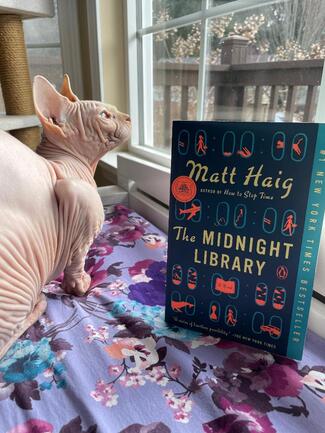
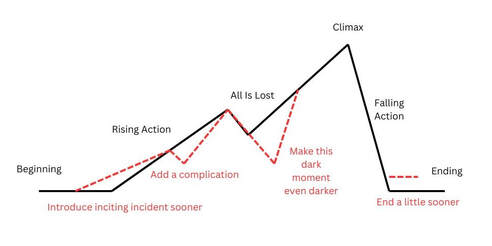
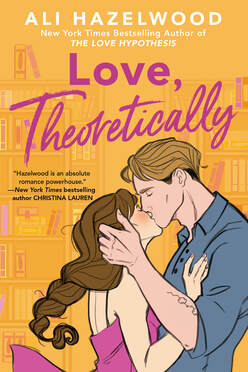
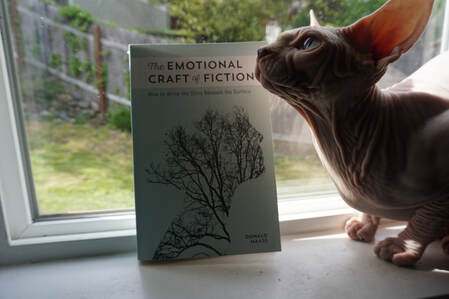
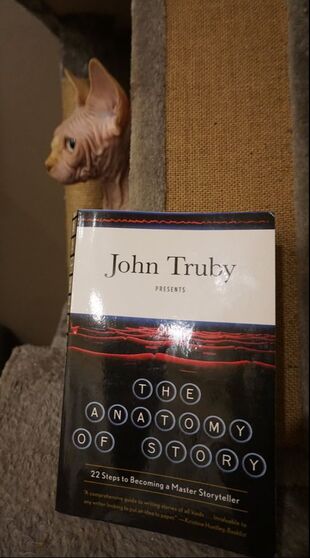

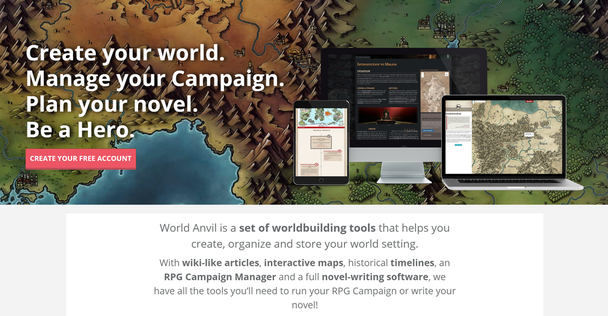
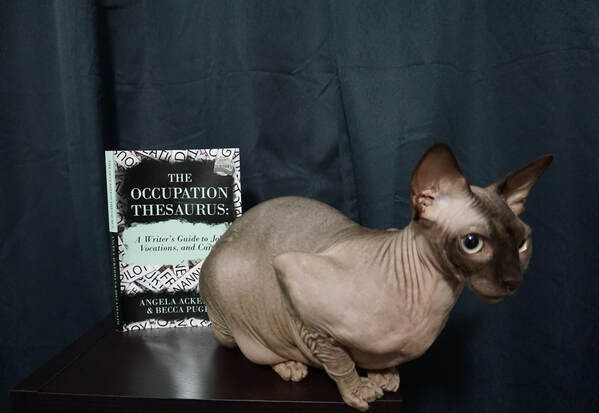
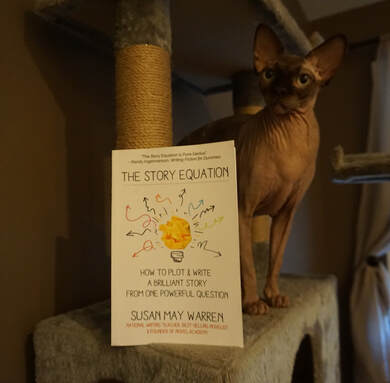
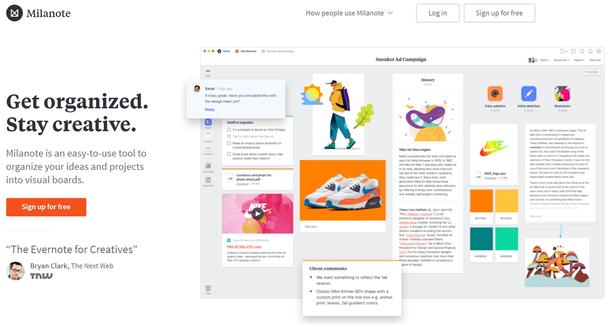
 RSS Feed
RSS Feed